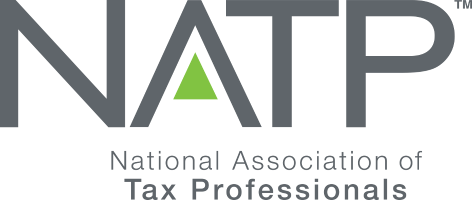Even if you believe the information you filed on your tax return is correct, the IRS may find discrepancies following an audit or examination. If this happens, you may be sent an IRS Statutory Notice of Deficiency to notify you of additional taxes owed.
In this guide, we will examine two types of IRS Statutory Notices of Deficiency — Notice CP3219A and Letter 531 — and the steps you can take if you’ve been sent a deficiency notice from the IRS. If you need advice on responding appropriately within the given time frame, turn to the professional tax consultants at BC Tax.
What Is a Notice of Deficiency From the IRS?
After auditing or examining your tax return, the IRS may determine that you owe additional taxes. The IRS will then send you a series of notices outlining these uncovered discrepancies and the amount they believe you owe.
If you don’t respond to initial notices sent from the IRS, you will receive a Statutory Notice of Deficiency — most commonly Letter 531 or Notice CP3219A.
These documents provide detailed information on the additional tax assessment and your right to challenge these changes. A Statutory Notice of Deficiency gives you 90 days to respond. If you agree with the proposed adjustments, you can pay the amount. If you wish to challenge the decision, you can file a petition with the United States Tax Court.
Why Did You Receive IRS Letter 531?
If discrepancies are found following a tax audit that results in additional taxes owed, an IRS Letter 531 is sent.
Letter 531 will notify you of any proposed changes to your tax return and the increased amount owed. The notice also informs you of your right to file a petition with the U.S. Tax Court and gives you 90 days from the date on the letter to respond.
Why Did You Receive Notice CP3219A?
The IRS may receive additional information from your employer, bank or another third party that differs from what you reported on your tax return, increasing the amount of taxes owed. If this happens, you could be sent a Notice CP3219A.
Before you receive this notification, the IRS sends notices asking you to verify the information you provided, such as proof of income or deductions included on your tax return. When you don’t respond, Notice CP3219A outlines the amount you must pay and explains your right to file a Tax Court petition within 90 days.
How to Respond to an IRS Notice of Deficiency
When mailed a Statutory Notice of Deficiency, you have 90 days to take action before the IRS can begin the collection process.
If you’re unsure what to do, your most important step is to respond by the 90-day deadline. Doing so ensures your options remain open if you wish to file a petition with the Tax Court.
Read and Reply to the Notice of Deficiency
Whether you receive IRS Letter 531 or a CP3219A notice, read through the notice carefully, and examine your tax documents before you decide how to respond. You may also want to speak with a tax professional who can guide you through your options.
Included with your Statutory Notice of Deficiency is IRS Form 5564. Also called a Notice of Deficiency – Waiver, this document should be signed and returned to the IRS so they understand your position. Form 5564 should state whether you agree with the proposed taxes or disagree and plan to take further action.
If You Agree With the Proposed Changes
If you consent to the IRS’s assessment and the increase to your tax return, you can sign the enclosed Form 5564 to notify them that you agree with the proposed tax adjustments.
Your agreement indicates that you consent to pay the proposed tax increase. To settle the amount you owe to the IRS, you have several options:
- Pay in full: You can pay the total amount online or send a check to the IRS at the address on the Notice of Deficiency.
- Request a payment plan: If you cannot pay the full amount at this time, installment agreements allow you to pay the amount you owe over time.
- Settle your debt: You can submit an Offer in Compromise if paying the bill may cause financial hardship. This agreement settles your tax debt for less than the amount owed.
If You Want to Challenge the Proposed Tax Adjustment
If you do not agree with the proposed increase to your taxes or you have additional information that warrants a reevaluation of your tax deficiency, you can take steps to challenge the IRS’s decision.
- File a petition: You can contest the IRS’s decision by filing a petition with the U.S. Tax Court and requesting redetermination. The IRS cannot take further collection action until the court makes a decision. If you do not file a petition within 90 days, you lose your right to challenge the additional taxes.
- Request a deficiency withdrawal notice: If you can prove an administrative error or identity theft or have new information validating your initial tax return, you can fill out Form 8626 to request a deficiency notice withdrawal. This is when the IRS cancels the Notice of Deficiency with your consent.
- Pay under protest: Even if you disagree with the tax adjustment, you can pay the debt and then proceed with requesting a case reassessment and tax refund by submitting a written protest.
If you do not agree with the tax adjustment proposed in your Statutory Notice of Deficiency, consult a tax resolution expert. They can help you find the best route, whether you wish to decrease the amount owed or need assistance filing a court petition.
Consult the Experts at BC Tax to Resolve Your Notice of Deficiency
Receiving a Statutory Notice of Deficiency can be scary and confusing. That’s why you need a tax professional to walk you through this process and help you achieve a satisfying outcome. If you have gotten Letter 531 or Notice CP3219A from the IRS, reach out to BC Tax today. We offer free consultations with our licensed enrolled agents.

 1-800-548-4639
1-800-548-4639









